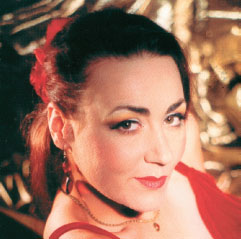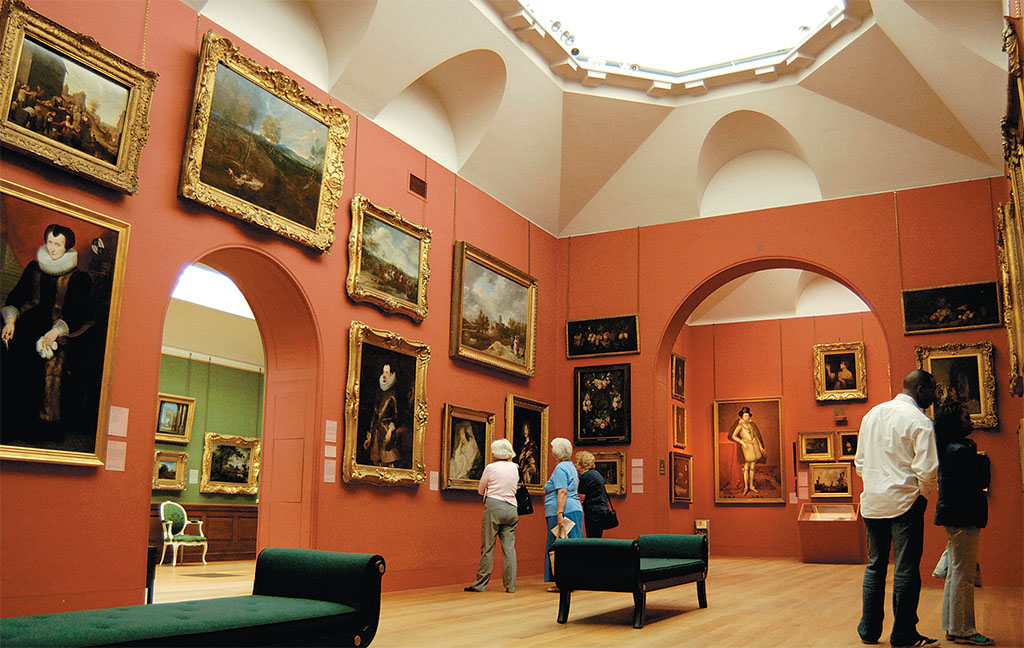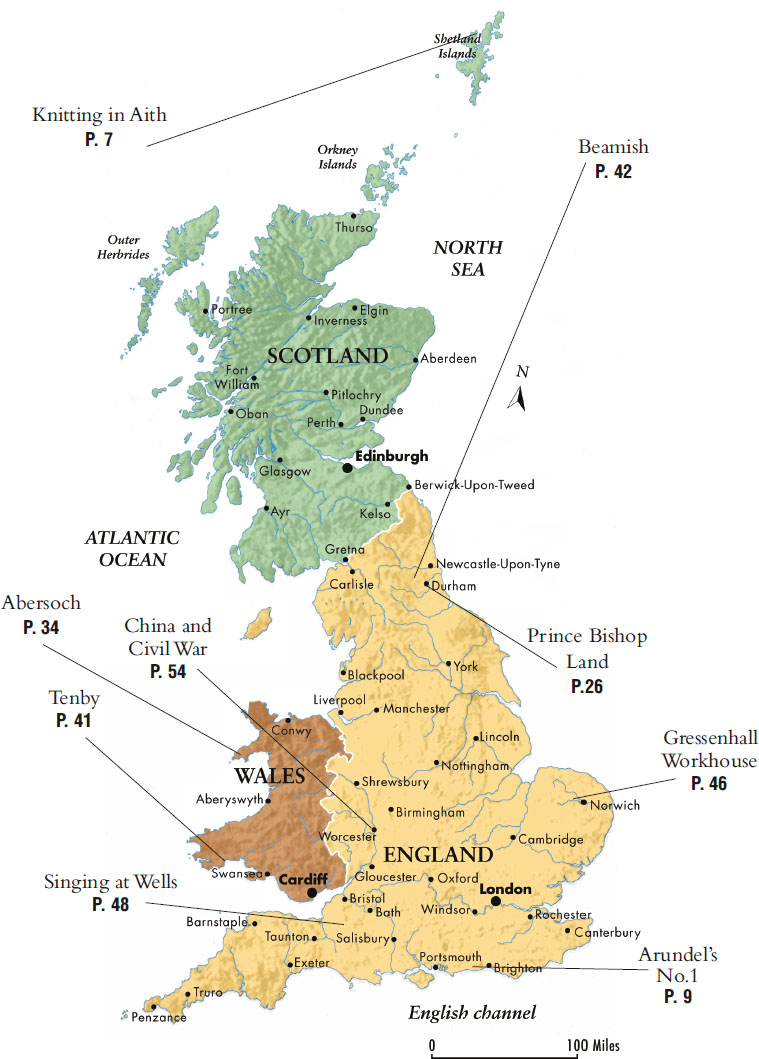
[caption id="CowardCartingLaneandDowntoDulwich_img1" align="aligncenter" width="241"]

The hottest—and most romantic—ticket in town just now is the extremely quirky Brief Encounter, based on the Noel Coward play and 1946 cinematic weepie starring Trevor Howard and Celia Johnson. Brief Encounter is part of the British psyche—our Gone With the Wind, I guess, and people regarded this radical new production with equal quantities of suspicion and excitement. I was so keen to see it that I actually went to a preview—and even that was sold out.
BRIEF ENCOUNTER
The Cinema, Haymarket
This isn’t just any old West End show—it’s an experience. For starters, it’s in a restored Art Deco cinema, fittingly the one where the film originally premiered, and the evening begins the moment you step off the street. Greeted by usherettes in 1940s uniform complete with pillbox hats and flashlights, we climbed a red rose-strewn staircase, surrounded by photos and music of the time. Once we were inside the auditorium, the ushers morphed into strolling musicians, playing acoustic hits of the era. And that was before the show started.
It’s a truly inventive production. The use of film alone is extra ordinary, with actors jumping in and out of the celluloid like Jeff Daniels in The Purple Rose of Cairo. The swirling passion of the doomed love affair sweeps the central couple away, made all the more tragic by a supporting cast of rude mechanicals whose own earthy exploits keep the piece bubbling along with typical briskness. The lovers may be (literally) swinging from the chandeliers, but the working-class comic sidekicks keep their feet firmly on the ground. Cucumber sandwiches and end-of-the-pier interval acts keep the whole thing about as British as it comes.
While I was walking down The Strand before the show, past the currently-under-renovation Savoy Hotel, I couldn’t resist nipping down Carting Lane, dodging the white delivery vans that litter the place day and night, to visit London’s last remaining patent Sewer Gas Destructor Lamp. Once, these streetlights, made by J. Webb of Birmingham, performed the dual function of lighting Britain’s streets and controlling potentially lethal levels of methane in the sewers below. Hardly any survive today, and even the one down Carting Lane (which is presumably the reason for its archaic nickname “Farting Lane”) has had its fair share of knocks. The lamp is easily distinguishable from its modern neighbors by its greenish glow, alight 24 hours a day, and I like to visit it whenever possible to remind myself of the ingenuity of the Victorians.
THE SEWER GAS DESTRUCTOR LAMP
Carting Lane, WC2
I also took the opportunity of visiting The Coal Hole, on the corner of Carting Lane and Strand, a rich Edwardian pub with a list of names-you-like-to-drop ex-regulars, from Dylan Thomas and Oscar Wilde to Aleistair Crowley and Richard Harris. The original Coal Hole was a notorious joint in Fountain Court a few steps away (where William Blake lived). Edmund Kean, one of the great 19th-century Shakespearian actors, used to get a bunch of his mates rolling drunk there and send them off to heckle his rivals in neigh-boring theaters. The current bar, built in 1904, is a masterpiece of Art Noveau “medievalism” with leaded windows, mock Tudor beams, carved friezes and a marble fireplace. It’s even got a “gallery.” Being so close to Covent Garden, it’s still popular with theatergoers, though most of the pre-show drinks are a little more restrained these days. It’s on two levels, and the lower one is filled with booths, nooks and crannies, though it can get very crowded. The pub-grub style food, considering the location, isn’t bad—of the “hearty pie” variety, but it’s the cuteness of the place I go for.
THE COAL HOLE
The Strand, WC2
One of London’s finest art galleries is a short train ride from the center of town—about 15 minutes, I’d guess, though I was so busy nosing into people’s back gardens out of the window I didn’t actually notice. The Dulwich Picture Gallery is purpose-built, designed by the great Sir John Soane, and is something of a marvel in itself. After all, there can’t be many galleries that incorporate their founders’ graves inside them.
Obviously in 1817, electric lights hadn’t been invented, so Soane designed Dulwich Picture Gallery with all manner of clever lanterns and hidden light sources to give the paintings their best chance. And what paintings. This extraordinary collection, which includes Van Dycks, Reynolds, Rubens, Gainsboroughs, Hogarths, Watteaus, Fragonards, Constables and Canalettos, to name just a few, was originally put together by a couple of dealers who were hoping to sell them to the King of Poland. Annoyingly for them, Poland was partitioned and the pair was left with a collection fit for a king on their hands. Unable to sell them for what they were worth, they decided instead to make them a gift to the public. The British Museum elbowed its way to the front of the queue for the venue, but its governors were deemed too “aristocratic.” The dealers finally settled on Dulwich, a leafy suburb of South London.
DULWICH PICTURE GALLERY
Gallery Road, Dulwich
I cannot stress enough how worth-it a visit to this place is. The building itself is gorgeous, its content sublime, arranged in two areas—paintings from beer-drinking countries and those from wine-drinking nations, with a couple of cocktails in the middle. Don’t miss the little stained-glass-lit mausoleum of the museum’s two founders, and check out the superb temporary exhibitions, too.
[caption id="CowardCartingLaneandDowntoDulwich_img2" align="aligncenter" width="1024"]

COURTESY OF DULWICH PICTURE GALLERY
Back in town—and it took a group of visiting American friends to sniff out Christopher’s Grill in Covent Garden. I’d walked past it many times, but since we have a chain of YMCA-style hostels called Saint Christopher’s over here, I’d stupidly assumed it was for backpackers only. That couldn’t be further from the truth. A beautifully restored listed building, the lower bar has been done up in contemporary style warm and funky, but the upper dining area is a revelation. Even the spiral stone staircase, with its time-worn banister, is exquisite and the rich, plummy shades and giant mirrors give this steak restaurant a feeling of lightness and discreet elegance. When booking, ask for a window seat. The very best one is in the little circular room at the top of the stairs, though even the tables at the west end of the main dining room have great views all the way down to Waterloo Bridge.
We chose from the pre-theater menu—all exquisite dishes, though I felt some of them had been under-described—my “green salad leaves” sounded really boring and weren’t at all. Grilled flank steak with plum tomato sauce, salmon fishcakes with buttered spinach and roast breast of chicken with basil veloute all looked scrumptious as well. Christopher’s also has a martini bar, featuring 26 varieties of the potent potable. They even offer martini master classes for budding martini maestros.
CHRISTOPHER’S GRILL
18 Wellington Street, WC2E
Next time, I’ll be scouting underground to search out a 1930s gentlemen’s spa in Regent Street, checking out a cinema organ recital in a furniture store and taking a gluten-free, lactose-intolerant vegetarian out for afternoon tea. Do wish me luck….
THIS MONTH’S CONTACTS:
BRIEF ENCOUNTER
www.seebriefencounter.com
THE SEWER GAS DESTRUCTOR LAMP Carting Lane, WC2
THE COAL HOLE The Strand, WC2
DULWICH PICTURE GALLERY
www.dulwichpicturegallery.org.uk
CHRISTOPHER’S GRILL
www.christophersgrill.com
[caption id="CowardCartingLaneandDowntoDulwich_img3" align="aligncenter" width="759"]

KEVIN JOHNSON





Comments